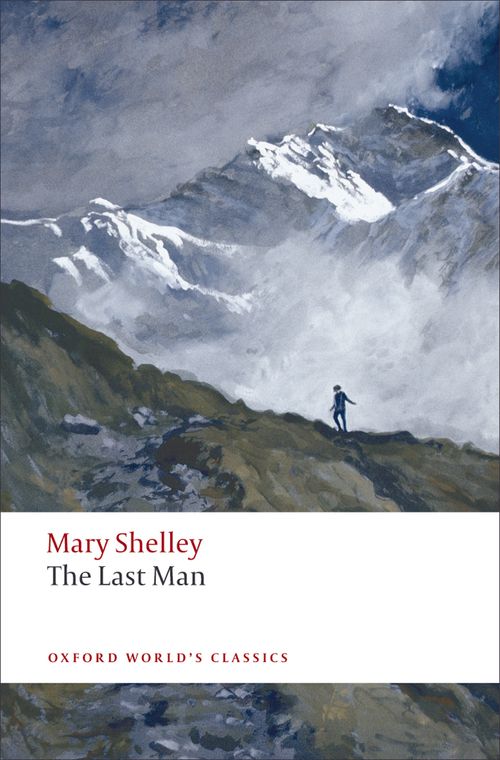Home >
Oxford World's Classics >
The Last Man (British and Irish Literature)
Oxford World's Classics: British and Irish Literature | British and Irish Literature
The Last Man
ISBN: 9780199552351
Series: Oxford World's Classics: イギリス・アイルランド文学
The Last Man (British and Irish Literature)
Oxford World's Classics: イギリス・アイルランド文学 The Last Man (British and Irish Literature) メディア > 書籍 > ノンフィクション > 言語学習書 Expect Delays of Up to 4 Weeks| ご注文はこちら |
ISBN
9780199552351 (旧規格ISBN: 0199552355)
- 説明
- シリーズの説明
作家名:シェリー (M.W.)
放題:最後の人間
'The last man! I may well describe that solitary being's feelings, feeling myself as the last relic of a beloved race, my companions extinct before me.' Mary Shelley, Journal (May 1824). Best remembered as the author of Frankenstein, Mary Shelley wrote The Last Man eight years later, on returning to England from Italy after her husband's death. It is the twenty-first century, and England is a republic governed by a ruling elite, one of whom, Adrian, Earl of Windsor, has introduced a Cumbrian boy to the circle. This outsider, Lionel Verney, narrates the story, a tale of complicated, tragic love, and of the gradual extermination of the human race by plague. The Last Man also functions as an intriguing roman a clef, for the saintly Adrian is a monument to Percy Bysshe Shelley, and his friend Lord Raymond is a portrait of Byron. The novel offers a vision of the future that expresses a reaction against Romanticism, as Shelley demonstrates the failure of the imagination and of art to redeem her doomed characters.
放題:最後の人間
'The last man! I may well describe that solitary being's feelings, feeling myself as the last relic of a beloved race, my companions extinct before me.' Mary Shelley, Journal (May 1824). Best remembered as the author of Frankenstein, Mary Shelley wrote The Last Man eight years later, on returning to England from Italy after her husband's death. It is the twenty-first century, and England is a republic governed by a ruling elite, one of whom, Adrian, Earl of Windsor, has introduced a Cumbrian boy to the circle. This outsider, Lionel Verney, narrates the story, a tale of complicated, tragic love, and of the gradual extermination of the human race by plague. The Last Man also functions as an intriguing roman a clef, for the saintly Adrian is a monument to Percy Bysshe Shelley, and his friend Lord Raymond is a portrait of Byron. The novel offers a vision of the future that expresses a reaction against Romanticism, as Shelley demonstrates the failure of the imagination and of art to redeem her doomed characters.
Oxford World’s Classics は、誰もが知る有名な物語から一般読者にはなじみの薄い隠れた名作まで、古典や文芸作品の数々を100年以上に渡り提供し続けているオックスフォード大学出版局を代表する叢書です。 現在メソポタミア神話から20世紀小説の名著まで、約770タイトルを刊行しており、各作品に相応しい専門家を校訂者に迎え、原典に解題、注釈、年代記、関係書目を付して紹介しています。必要に応じ、地図や用語集、索引、図版等の付録をつけているほか、読者に最新の研究動向を踏まえた作品理解を促すべく、定期的な新刊の追加や、既刊タイトルの改版を行っています。
(注意:本書は、原文を掲載した書籍です。グレイデッド・リーダーではありません)
作家名:シェリー (M.W.)
放題:最後の人間
'The last man! I may well describe that solitary being's feelings, feeling myself as the last relic of a beloved race, my companions extinct before me.' Mary Shelley, Journal (May 1824). Best remembered as the author of Frankenstein, Mary Shelley wrote The Last Man eight years later, on returning to England from Italy after her husband's death. It is the twenty-first century, and England is a republic governed by a ruling elite, one of whom, Adrian, Earl of Windsor, has introduced a Cumbrian boy to the circle. This outsider, Lionel Verney, narrates the story, a tale of complicated, tragic love, and of the gradual extermination of the human race by plague. The Last Man also functions as an intriguing roman a clef, for the saintly Adrian is a monument to Percy Bysshe Shelley, and his friend Lord Raymond is a portrait of Byron. The novel offers a vision of the future that expresses a reaction against Romanticism, as Shelley demonstrates the failure of the imagination and of art to redeem her doomed characters.
放題:最後の人間
'The last man! I may well describe that solitary being's feelings, feeling myself as the last relic of a beloved race, my companions extinct before me.' Mary Shelley, Journal (May 1824). Best remembered as the author of Frankenstein, Mary Shelley wrote The Last Man eight years later, on returning to England from Italy after her husband's death. It is the twenty-first century, and England is a republic governed by a ruling elite, one of whom, Adrian, Earl of Windsor, has introduced a Cumbrian boy to the circle. This outsider, Lionel Verney, narrates the story, a tale of complicated, tragic love, and of the gradual extermination of the human race by plague. The Last Man also functions as an intriguing roman a clef, for the saintly Adrian is a monument to Percy Bysshe Shelley, and his friend Lord Raymond is a portrait of Byron. The novel offers a vision of the future that expresses a reaction against Romanticism, as Shelley demonstrates the failure of the imagination and of art to redeem her doomed characters.
シリーズの説明
Oxford World’s Classics は、誰もが知る有名な物語から一般読者にはなじみの薄い隠れた名作まで、古典や文芸作品の数々を100年以上に渡り提供し続けているオックスフォード大学出版局を代表する叢書です。 現在メソポタミア神話から20世紀小説の名著まで、約770タイトルを刊行しており、各作品に相応しい専門家を校訂者に迎え、原典に解題、注釈、年代記、関係書目を付して紹介しています。必要に応じ、地図や用語集、索引、図版等の付録をつけているほか、読者に最新の研究動向を踏まえた作品理解を促すべく、定期的な新刊の追加や、既刊タイトルの改版を行っています。
(注意:本書は、原文を掲載した書籍です。グレイデッド・リーダーではありません)
EASY ORDER FORM
表示価格が税込価格
価格(税抜):
2,390 円


